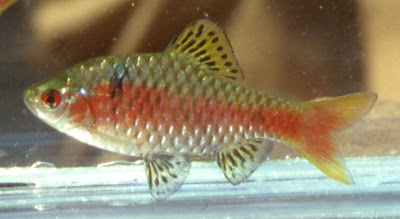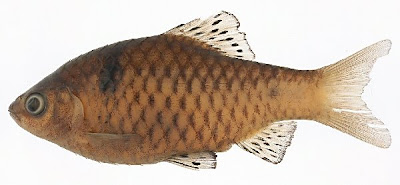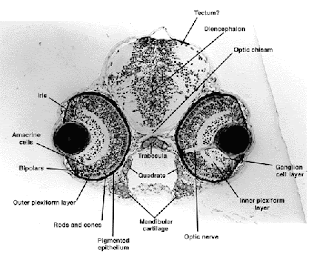
A sturgeon (Acipenser oxyrinchus) once owned by King Adolf Fredrik, studied by Linnaeus,
now housed in the Swedish Museum of Natural History collections.Photo A. Silfvergrip. Data . Image CC-BY.
Once upon a time there was in the Baltic Sea a fish known as the sturgeon. Its existence in Swedish waters were known to Linnaeus and Artedi, and Linnaeus named it Acipenser sturio in 1758, based on two small specimens in alcohol, and a skin, plus literature records. These two alcohol specimens are still in the collection of the Swedish Museum of Natural History. One comes from Amsterdam apothecary Albertus Seba, bought by King Adolf Fredrik probably 1752, the origin of the other one is more obscure.
From 1758 till recently the sturgeon was studied, fished, eaten and extinguished from European waters, save for a declining population in the French river Garonne, which defies rapid extinction despite cadmium poisoning and sexually asynchronous breeding (males and females do not breed at the same time …). Then a German-US team in 2002 (Arne Ludwig et al.) could show that the northern European and Baltic Sturgeon is genetically the same as the North American Atlantic sturgeon Acipenser oxyrinchus Mitchill, 1815, and not at all the same as the sturgeon in France, the Mediterranean, and the Black Sea.
Ooops … And this had already been demonstrated by morphological studies, that somehow did not draw the right conclusions.
Whereas there are still technical issues over which name goes to which species, the preliminary conclusion is that in the Garonne swims Acipenser sturio, and in the North Sea and the Baltic Acipenser oxyrhinchus was as much at home as in the United States.
The Baltic sturgeon is extinct in Europe. The last specimen identified as A. sturio in the Baltic died in 1996, and was an A. oxyrinchus.
Nevertheless, Swedish media the last two days have enthusiastically declared the return of the sturgeon! Based on a fish taken outside the island of Öland in the Baltic Sea, 10 of April by fisherman Ulf Åkerlund.
From the local newspaper scoop we learn that the fisherman is excited (as he should be; this is an uncommon fish whatever it is), and the Fisheries Board expert is more interested in tasting the roe than getting it properly identified.
From the published image, you can see the mutilated pectoral fin indicating a pond cultured fish. And what more, it looks not like a sturgeon but resembles more the Russian sturgeon Acipenser gueldenstaedti, and could also represent Siberian sturgeon Acipenser baeri. Although there are efforts to reintroduce Acipenser oxyrhinchus into the Baltic, I am not informed of any releases having taking place yet. If and when it happens it will be a great waste of money on a lost case.
The “sturgeons” we now have in the Baltic are escapes from cultures of Siberian and Russian sturgeon and hybrids between different species. They look like sturgeon because all 20+ species of sturgeons look about the same. In May 2000 a small “sturgeon” was caught in Kalmarsund strait and given to the Swedish Museum of Natural History (NRM). The specimen was sequenced and blasted as Acipenser stellatus, which it is not, and morphologically identified as A. baeri.
Other more or less recent Swedish “sturgeons” include a Siberian sturgeon from the Stockholm Archipelago in 1969, a Russian sturgeon from Lysekil in 1970, and one “sturgeon” from Skåne in 2007 that, like one from Kummelbank in 1991, has not been identified yet. Browse sturgeon data in the NRM fish collection.
Will we know which species was caught this time? It would be a good thing to build up knowledge as early as possible about potential “sturgeon” invasions in the near future, and we could learn more how to identify the fishes, and using molecular and morphological markers track the movements of these aliens in our waters. Let’s see what tomorrow has in store.




